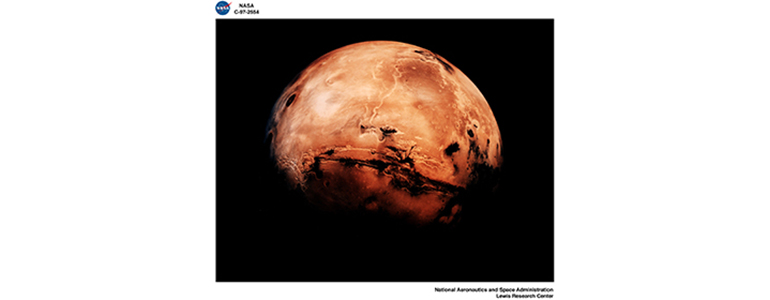The critically acclaimed Ridley Scott film The Martian depicts Matt Damon as botanist/astronaut Mark Watney who is stranded on Mars after he is carried off by a storm during an emergency liftoff sequence. His fellow crew members presume that he is dead, and in the face of the potential loss of their exit vehicle, launch themselves on their return journey to Earth leaving him behind.
What follows is the “McGuyver meets Apollo 13” story of Watney’s struggle to survive and reconnect with NASA’s scheduled return trip to Mars four years hence. Predictably he faces one challenge after another. Despite his mission role as a “botanist” rather than a “real scientist” he improvises his way through everything from an inadequate fuel supply to freezing Martian temperatures. Once the script is beyond the improbable gale force of the Martian storms that initially strand him, most of what is portrayed as making up the problem and solution spaces is (according to those who know) true to reality. The intense rhythm of “problem-solution-problem–solution” sustains the audience through a buffet of engineering challenges and the creativity needed to meet them.
The biggest lessons of the film come less from the specific questions and answers and more from the problem solving process Watney employs. His formulation of his process in the closing scene of the film says it well. Watney explains that to solve problems you have to “get to work. That’s all it is. You just begin. You do the math. You solve one problem and you solve the next one, and then the next. And if you solve enough problems, you get to come home.”
Watney’s process is sound. He is able to move through his difficulties by disciplining himself to follow the process. His approach embodies several sound principles.
He never kids himself. He is realistic about the nature and the potential impact of each problem on his chances for survival. He acknowledges the risks and tradeoffs. He accepts the realities of his environment without surrendering to the idea that the odds are too long to attempt a solution.
Too often we don’t validate the context that contains the problem space. As Russell Ackoff put it, “We fail more often because we solve the wrong problem than because we get the wrong solution to the right problem.” Watney carefully identifies each problem BEFORE moving to solution. Sometimes this is done for him by some dramatic occurrence but in all instances he is careful to see that he knows the problem he is trying to solve.
He studies the problem and the context. This is what he means by “do the math.” Once he identifies the problem he is careful to understand it. Given an hour to solve a problem Einstein posited that he would spend 55 minutes on the problem and 5 minutes on the solution. Watney allocates his time to that pursuit as he “does the math” and enters the solution space with a clear understanding of the problem.
As a part of his process he accurately and carefully assesses the risks involved. In several instances he surfaces his inner dialog (which the audience sees in the form of a video diary) to expose the weighing of trade-offs. His solutions are intriguing and ingenious but it is the clarity of his study of the problem space that is the real example for us as practical engineers.
He verifies the solution and cycles the process. He checks and rechecks his solution designs. From tying food production to varying “time remaining” scenarios to iterating his range in the rover, Watney is careful to be sure that his assumptions are correct and his solutions work in application and not just in theory. He faces a dynamic environment and his situation changes fluidly throughout his stay in space. But he is always verifying, reassessing and solving the next problem as it arises.
Based on the novel by Andy Weir the film builds on the author’s efforts to make the fictional story as real as possible. In large part it seems successful in that quest and has had its premises and facts endorsed by far more distinguished and knowledgeable experts than this writer. That verisimilitude adds to the attraction of the story and the solutions Watney comes up with are engaging and clever. But beyond the factual grounding of the problem-solution details stands the value of the narrative as an engineering tale. Weir and Scott offer us a picture of a hero with a sound reasoning process grounded in solid systems engineering practices. The film is well worth the time to see it.




